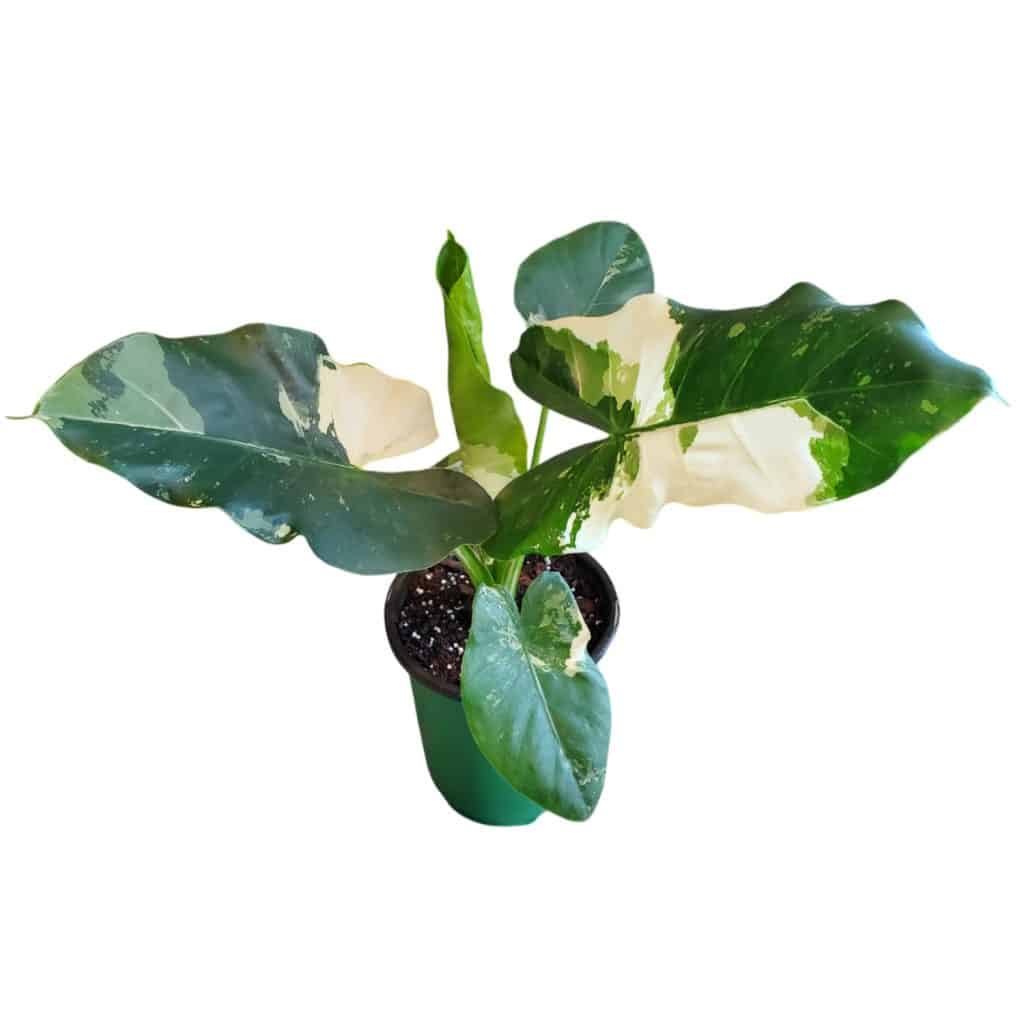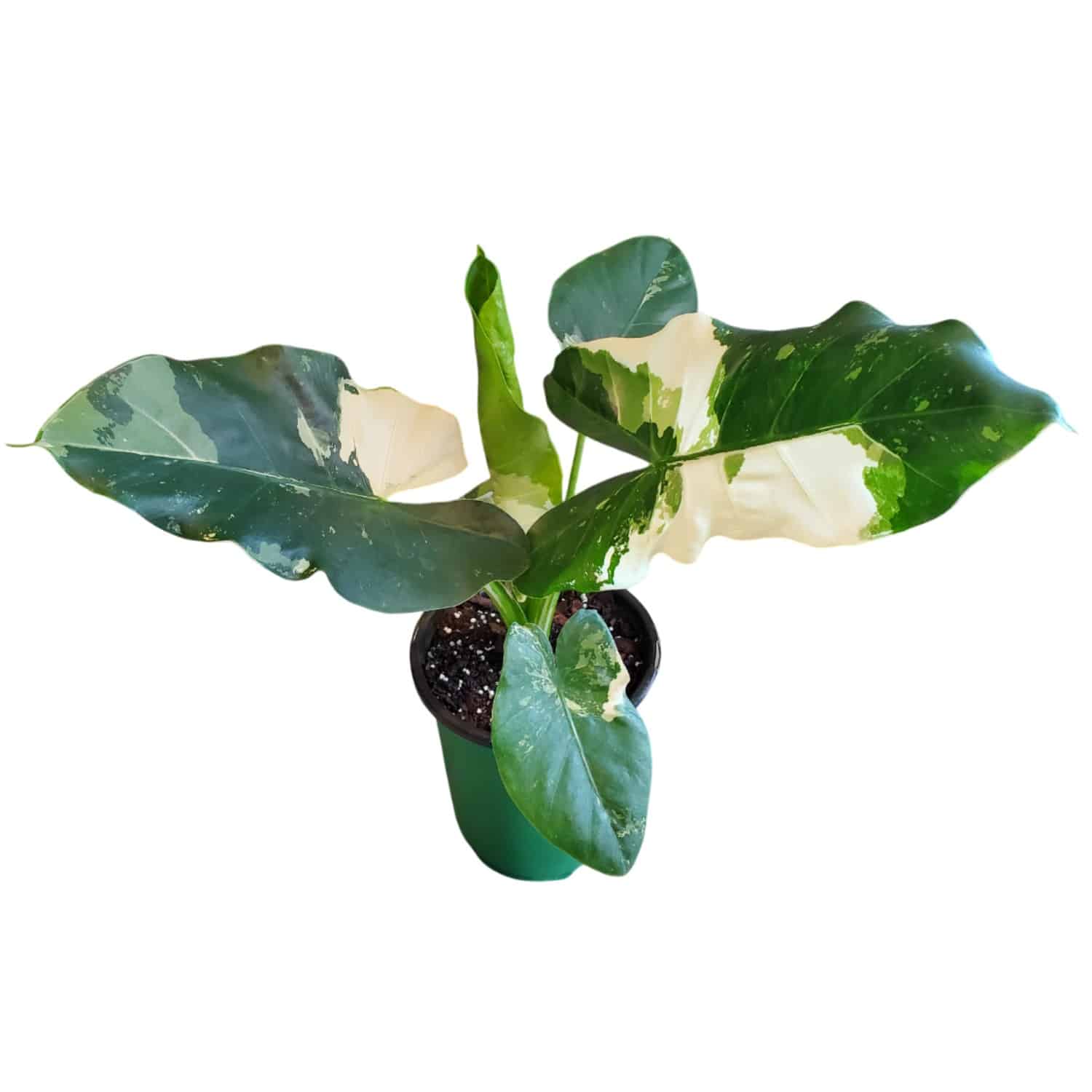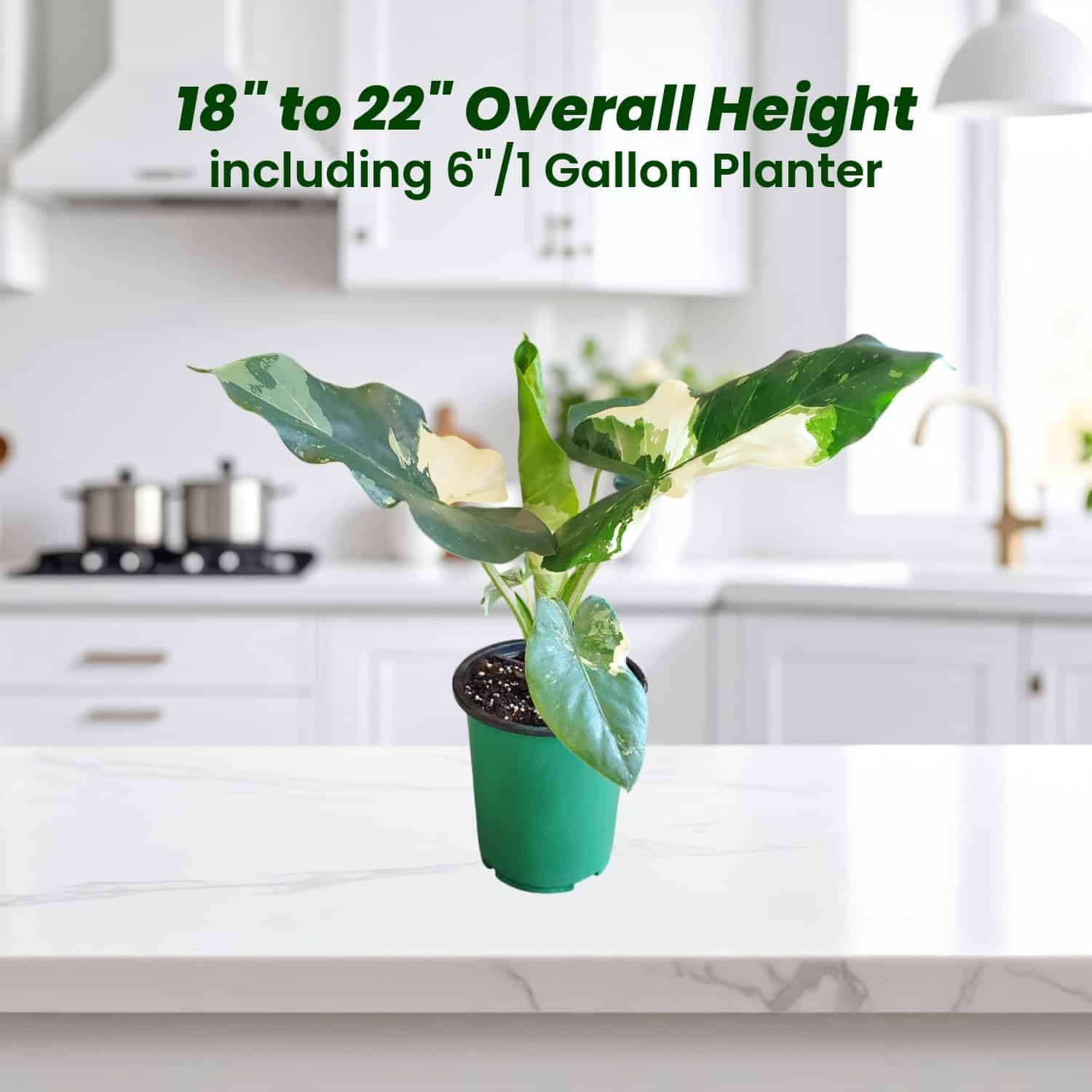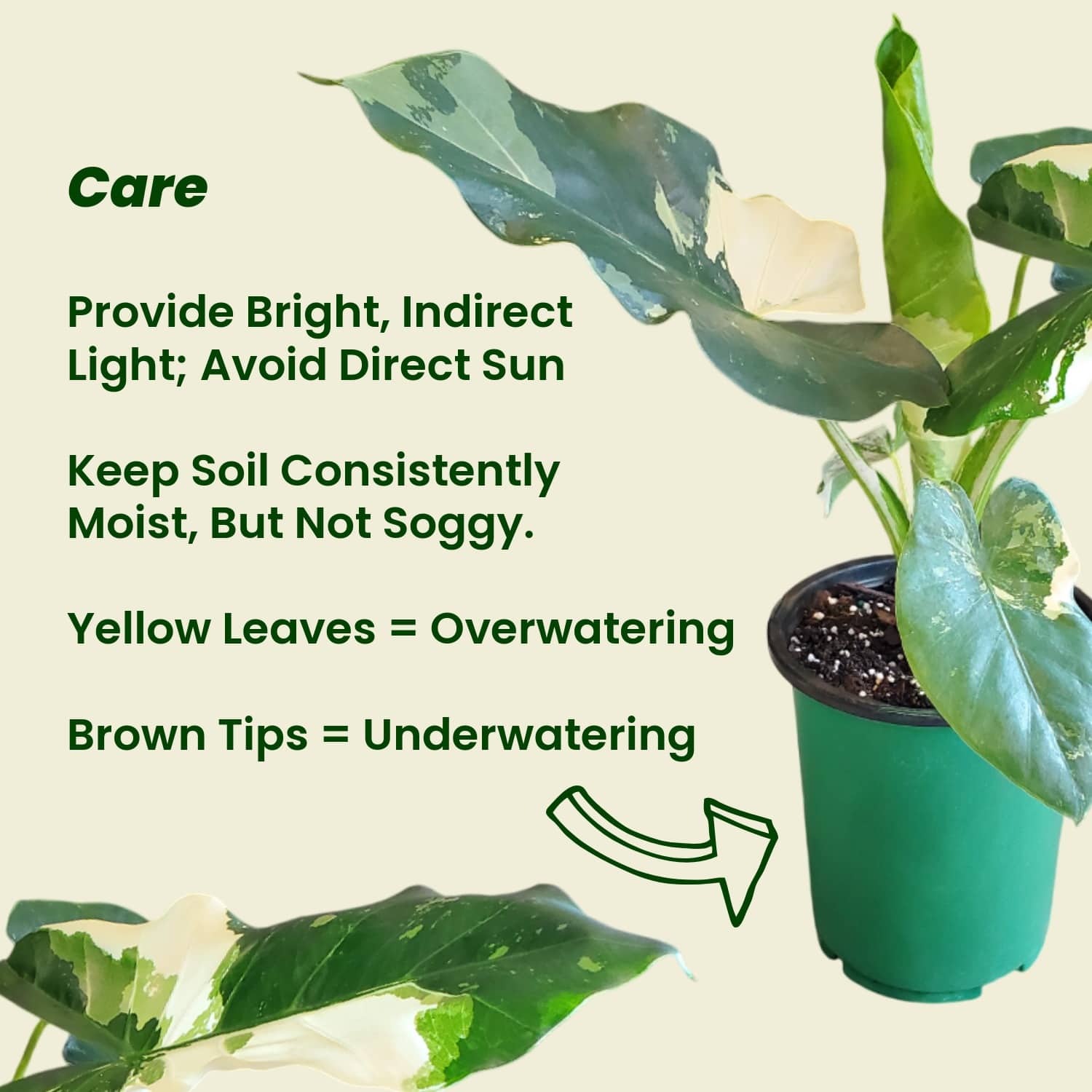Alocasia Macrorrhiza
Looking for a statement plant that’s as bold as it is beautiful? Meet the Alocasia Appaloosa Gold; a rare, variegated variety of Alocasia macrorrhiza with striking variegated leaves that look hand-painted by nature. This tropical stunner brings instant drama and elegance to any indoor space. Grown with care at our sustainable, family-owned Florida nursery, each plant ships in a 6” nursery pot and arrives full, healthy, and ready to shine in your home jungle.

Alocasia Appaloosa Gold Plant Care
Scientific Name
Alocasia macrorrhiza
Light
The Alocasia Appaloosa Gold loves bright, indirect light. Place it near an east- or west-facing window where it gets plenty of natural light without direct sun rays, which can scorch its beautiful variegated leaves. If your space has lower light, consider supplementing with a grow light to keep the foliage vibrant.
Water
Keep the soil evenly moist but never soggy. Water about once a week, or when the top inch of soil feels dry to the touch. Always use a pot with good drainage to prevent root rot. In winter months, reduce watering slightly as the plant enters a slower growth period.
Hardiness Zones
USDA Zones: 9–11 (if grown outdoors)
Ideal for indoor growing year-round in most climates
If placing outdoors in summer, bring it inside once nighttime temps dip below 60°F
Find your zone here!
Pet Friendliness
Alocasia plants are considered toxic to cats, dogs, and other pets if ingested. Keep out of reach of curious paws or place in pet-free zones of your home.
Alocasia Gold Plant FAQ
How big is the plant when it arrives?
Your Alocasia Appaloosa Gold arrives in a 6-inch nursery pot with an overall height of 18 to 22 inches, including the pot.
Can this plant go outside?
Yes! It can thrive outdoors in zones 9–11 or during warm months in other climates. Just make sure it’s placed in bright, indirect light and brought inside when temps drop below 60°F.
How rare is this variety?
Very rare! The Appaloosa Gold is a collector’s variety, known for its unique variegation. No two plants look alike.
What happens if some leaves turn yellow?
Occasional yellowing is normal as old leaves die off. However, consistent yellowing may indicate overwatering or lack of light.
Is this plant beginner-friendly?
Yes; with proper lighting and a regular watering schedule, it’s low-maintenance and perfect for both beginners and experienced plant parents.






Reviews
There are no reviews yet